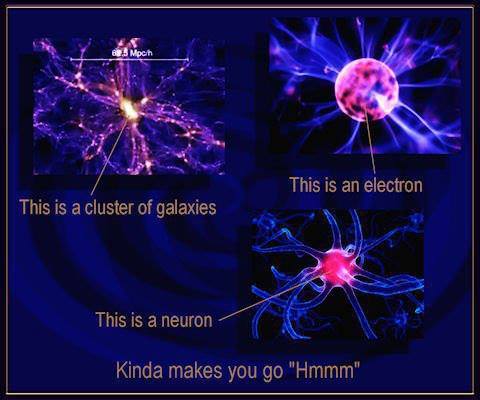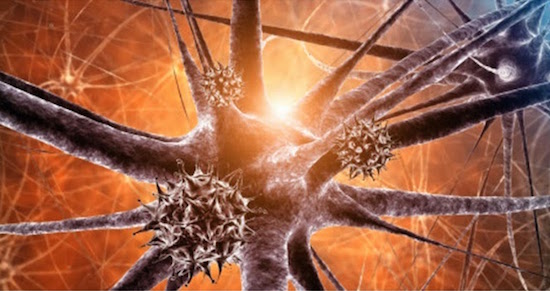It is often said that we are connected with the universe in such a way that we cannot even comprehend. It is said that the universe is the exact reflection of ourselves and that the universe is alive. A new study proposed by scientists suggest that the universe acts like some sort of giant brain. The study, which was published in Natures Scientific Report suggests the universe in which we live in grows just like a giant brain. Researchers suggest that the electrical firing scene between brain cells is actually mirrored by the shape of the expanding galaxies in the universe.

A computer simulation proposes that “natural growth dynamics” – the way that systems evolve – are actually the same for different kinds of networks – whether it’s the Internet, the human brain or the universe as a whole structure. Nikola Tesla understood how the universe worked and how much we are all connected to it. “There is no conflict between the ideal of religion and the ideal of science, but science is opposed to theological dogmas because science is founded on fact. To me, the universe is simply a great machine which never came into being and never will end. The human being is no exception to the natural order. Man, like the universe, is a machine. Nothing enters our minds or determines our actions which is not directly or indirectly a response to stimuli beating upon our sense organs from without.” – Tesla

actually, researchers found out that when they compared the universe is known history to the growth of social networks and human brain circuits, they discovered that all of the networks expand in a similar fashion. The networks balanced links between similar nodes with those which already had many connections. “The new study suggest a single fundamental law of nature may govern these networks,” said physicist Kevin Bassler of the University of Houston. “For a physicist it’s an immediate signal that there is something missing, understanding of how nature works,” added Dmitri Krioukov from the University of California San Diego.
Researchers wrote in the study: “Here we show that the casual network representing the large-scale structure of space-time in our accelerating universe is a power law graph with strong clustering, similar to many complex networks such as the Internet, social, or biological networks. We proved that this structural similarity is a consequence of the asymptotic equivalence between the large-scale growth dynamics of complex networks and casual networks.”
This has led researchers to suggest that the universe has a built-in mechanism which is designed to expand and evolve, encouraging novelty and increased coherence.
